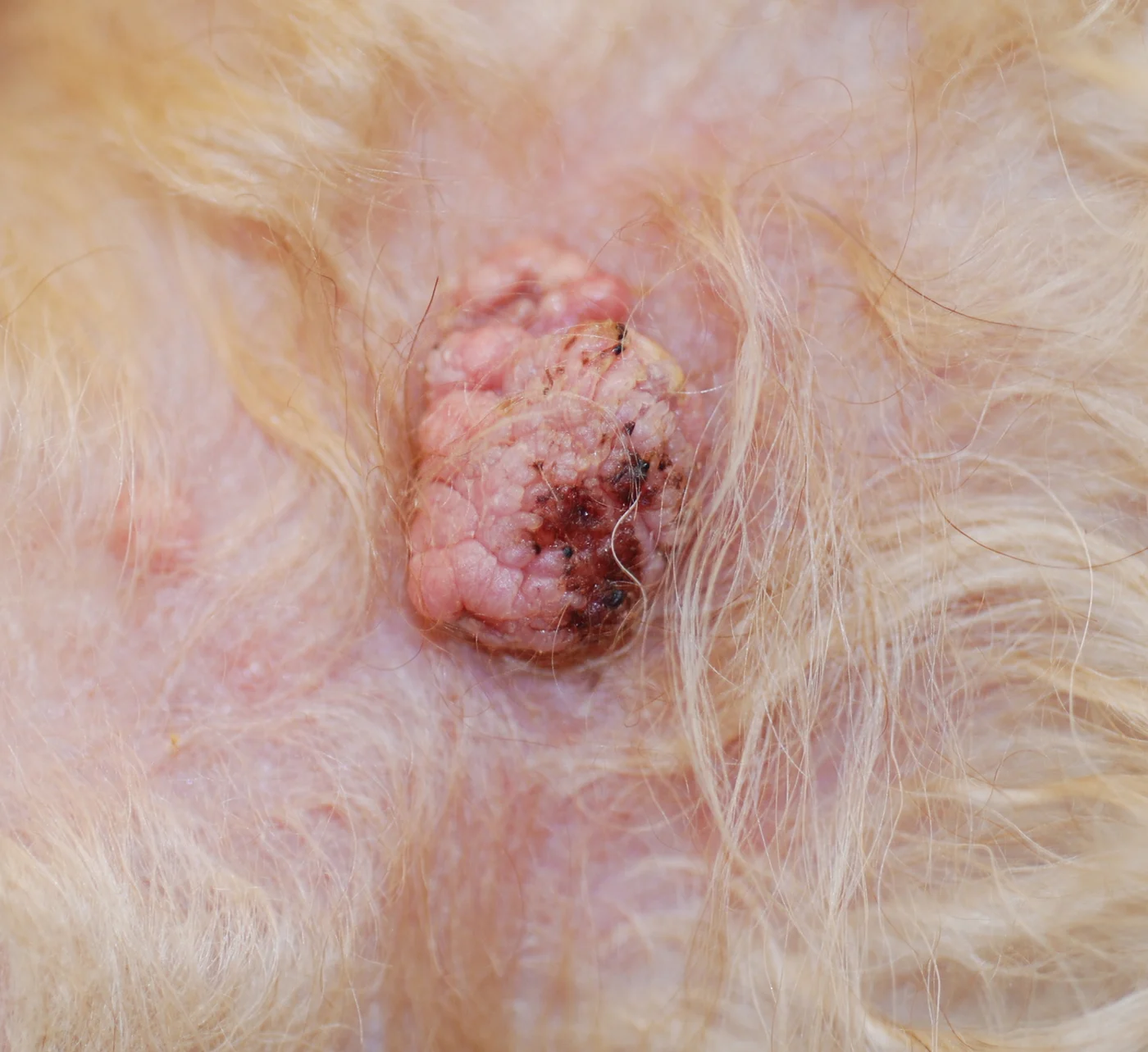Although most skin tumors encountered in veterinary patients are benign, malignant tumor types do occur. Because many are erythematous and pruritic, they can be easily confused with commonly diagnosed pruritic conditions (eg, scabies, allergic disease). The following tumors are commonly misdiagnosed based on their gross appearance.

FIGURE 1
Nodular sebaceous hyperplasia
Benign sebaceous gland tumor on the lateral thorax of a dog. Sebaceous gland tumors develop anywhere sebaceous glands are present, but occur primarily on the limbs and trunk; they can cause discomfort if they become secondarily infected. Sebaceous gland tumors are often observed on canine skin and infrequently on feline skin. These tumors have a recognizable wart-like appearance, but unlike papillomatous skin lesions, do not have a known viral cause. Although most sebaceous gland tumors are classified as the nodular sebaceous hyperplasia type, other types of sebaceous gland tumors—including sebaceous epithelioma, sebaceous adenoma, and sebaceous adenocarcinoma—are differentiated by distinctive histologic features.